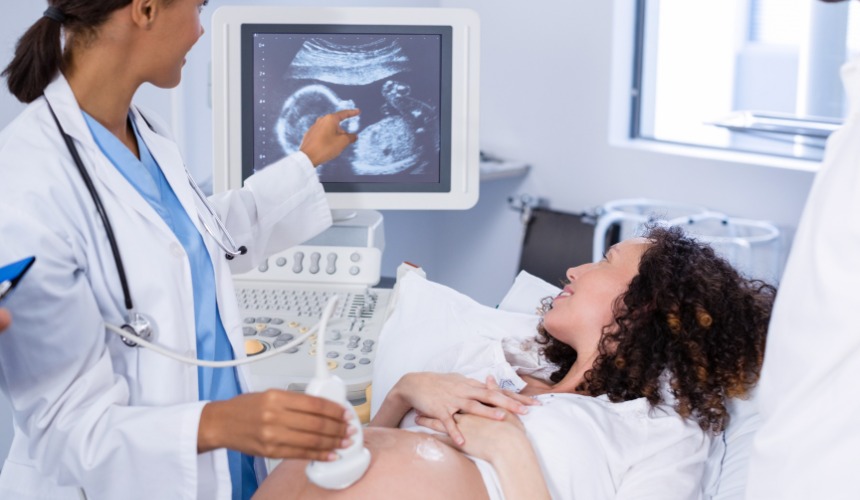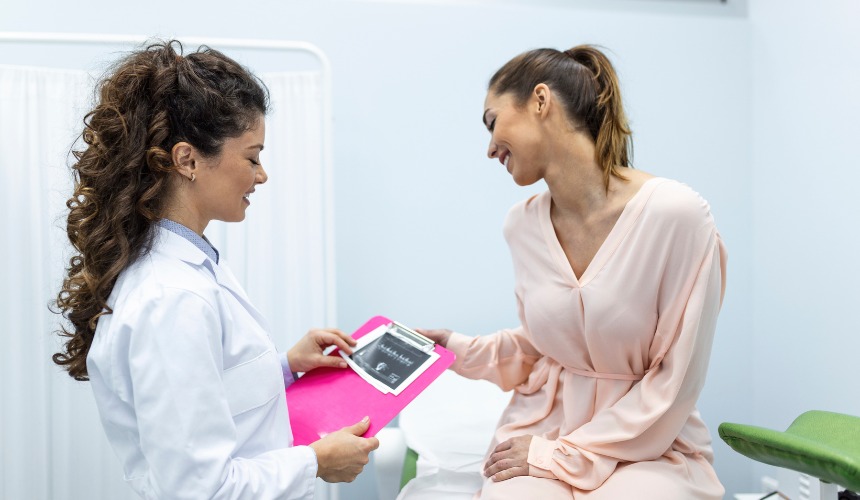Bringing a new life into the world is an awe-inspiring experience, and every pregnant mother wants what is best for herself and her baby during childbirth. Regarding giving birth, two primary methods are widely known: expected delivery and C-section delivery. Both options have pros and cons, and it’s crucial for expecting mothers to understand their differences to make informed decisions about their childbirth preferences. In this blog, we will delve into the details of normal and C-section delivery and touch upon VBAC (Vaginal Birth After Cesarean) as an alternative for women who have previously undergone C-sections.
Normal Delivery

Giving birth naturally, also known as standard or vaginal delivery, involves the baby passing through the birth canal to be born. It is the most common and traditional method of childbirth. Here are some key aspects to consider:
a. Process:
During normal delivery, labour typically begins with contractions that help the cervix dilate and efface, allowing the baby to move down the birth canal. The mother may experience pain as the contractions intensify, but the mother can utilize pain management techniques such as breathing exercises, relaxation techniques, and epidural anaesthesia.
b. Benefits:
Normal delivery has several potential benefits. It can promote a quicker recovery for the mother, as no surgical incision is involved. So patient require episiotomy. The baby also benefits from natural hormone releases during labour, aiding lung fluid clearance and stimulating breastfeeding.
c. Risks and Considerations:
While normal delivery is considered a natural process, it may involve risks such as perineal tear the perineum, which may require stitches, and possible injury to the baby’s failure of progress of labor deep transverse arrest, head during passage through the birth canal. Complications such as shoulder dystocia (baby’s shoulder getting stuck behind the mother’s pubic bone) or fetal cephalohematoma distress may necessitate emergency interventions.
C-Section Delivery
Cesarean delivery, commonly known as a C-section, is a surgical procedure in which the baby is delivered through an incision in the mother’s abdomen and uterus. Let’s explore some key aspects of this method:
a. Indications
C-sections may be planned or performed as emergency procedures. They can be recommended or required in cases where vaginal delivery may pose risks to the mother or baby. Examples of situations that may warrant a C-section include placenta previa (placenta covering the cervix), breech presentation (baby positioned feet or buttocks first), multiple pregnancies, or maternal health complications.
b. Benefits
C-sections can be life-saving for the mother and baby in certain circumstances. They provide a controlled environment for delivery, reducing the risks of birth trauma and minimising the chances of complications associated with prolonged labour. They may also be scheduled for medical or personal reasons, giving mothers a planned birth date.
c. Risks and Considerations
C-sections are major surgeries with certain risks, such as infection, bleeding, and blood clots. Mothers who undergo C-sections generally have a more extended recovery period than those with normal deliveries. Additionally, C-sections may have implications for future pregnancies, as there is a risk of uterine rupture during subsequent labour if the incision site has not healed correctly.
VBAC (Vaginal Birth After Cesarean)
VBAC refers to the option of attempting a normal delivery after having a previous C-section. It allows women who have had a C-section in the past to experience the natural process of childbirth if certain conditions are met:
a. Suitability
VBAC may be considered if the woman had a low transverse uterine incision during her previous C-section, has no contraindications for vaginal delivery, and if there is a healthcare provider experienced in VBAC available. Factors such as the reason for the last C-section, the type of incision,thickness of previous C-Section scar and any complications in the current pregnancy will also be assessed.
b. Benefits
VBAC can allow mothers to have a vaginal birth experience and potentially avoid the risks associated with C-sections. It may lead to shorter hospital stays and a faster recovery than repeat C-sections.
c. Risks and Considerations
VBAC is not without risks. The most significant concern is the possibility of uterine rupture, which can be life-threatening for both the mother and the baby. The likelihood of uterine rupture is relatively low but increases if the previous C-section incision was vertical or if labour is induced with medications like Pitocin. Continuous monitoring during labour is essential to detect any signs of complications promptly.
Making an Informed Decision
When deciding between normal and C-section delivery, expectant mothers must consult their healthcare providers, consider their medical history, and discuss their birth preferences. Every woman’s situation is unique, and what may be the best choice for one person may not apply to another. Remember, the health and safety of both the mother and baby are the top priorities.
Normal delivery and C-section delivery each have their own set of advantages, risks, and considerations. While normal delivery is often considered ideal, C-sections can be necessary and life-saving in certain circumstances. For women who have undergone previous C-sections, VBAC provides an alternative for experiencing vaginal birth, and they must approach it cautiously with professional guidance. The decision regarding the mode of delivery should be based on thorough discussions with healthcare providers and consideration of individual circumstances and preferences.
At Motherhood Hospitals, we have a team of experienced supers specialists backed by the latest infrastructure and facilities. We have the best gynaecologist in Lullanagar, Pune. We are experts in handling complex deliveries, gynaecological, and other surgeries including a range of laparoscopic surgeries.
Do take an appointment with the best maternity hospital in Lullanagar, Pune at a centre closest to you. Meet with our doctors who will carry out the required investigations, diagnose the issue and recommend the most appropriate treatment, enabling you to lead an active life.
If you wish to get in touch with Dr. Sucheta Parte, please book your appointment here.
FAQ’s
- What is the main difference between normal delivery and C-section delivery?
Normal delivery, also known as vaginal delivery, involves the baby passing delivering through the birth Natural canal. C-section delivery is a surgical procedure where the baby is delivered through an incision in the abdomen and uterus.
- Is normal delivery always the safer option?
Normal delivery is generally considered safe for women with uncomplicated pregnancies. with good pelvis, certain situations may require a C-section to ensure the mother’s and baby’s health and well-being. The best option should be determined through discussions with healthcare providers.
- Are there any risks associated with C-section delivery?
C-sections are major surgeries with risks like infection, bleeding, and blood clots. The recovery period is typically longer compared to normal delivery, and there may be implications for future pregnancies.
- Can I choose to have a C-section delivery even if there is no medical indication?
In some cases, C-sections may be scheduled for medical or personal reasons, provided there is no contraindication for vaginal delivery. However, it is important to thoroughly discuss with healthcare providers the potential risks and benefits of elective C-sections.
- What is VBAC, and who is eligible for it?
VBAC stands for Vaginal Birth After Cesarean, allowing women who have previously had a C-section to attempt a standard delivery. Eligibility for VBAC depends on factors such as the type of uterine Normal incision in the previous C-section, the absence of contraindications, and the availability of a healthcare provider experienced in VBAC. Good hospital infrastructure to handle emergencies.
- Is VBAC a safe option for every woman who had a previous C-section?
VBAC can be a safe option for many women, but it also carries some risks, particularly the possibility of uterine rupture. The decision to attempt a VBAC should be made in consultation with a healthcare provider who can evaluate individual circumstances and provide appropriate guidance.


 Toll Free Number
Toll Free Number

















